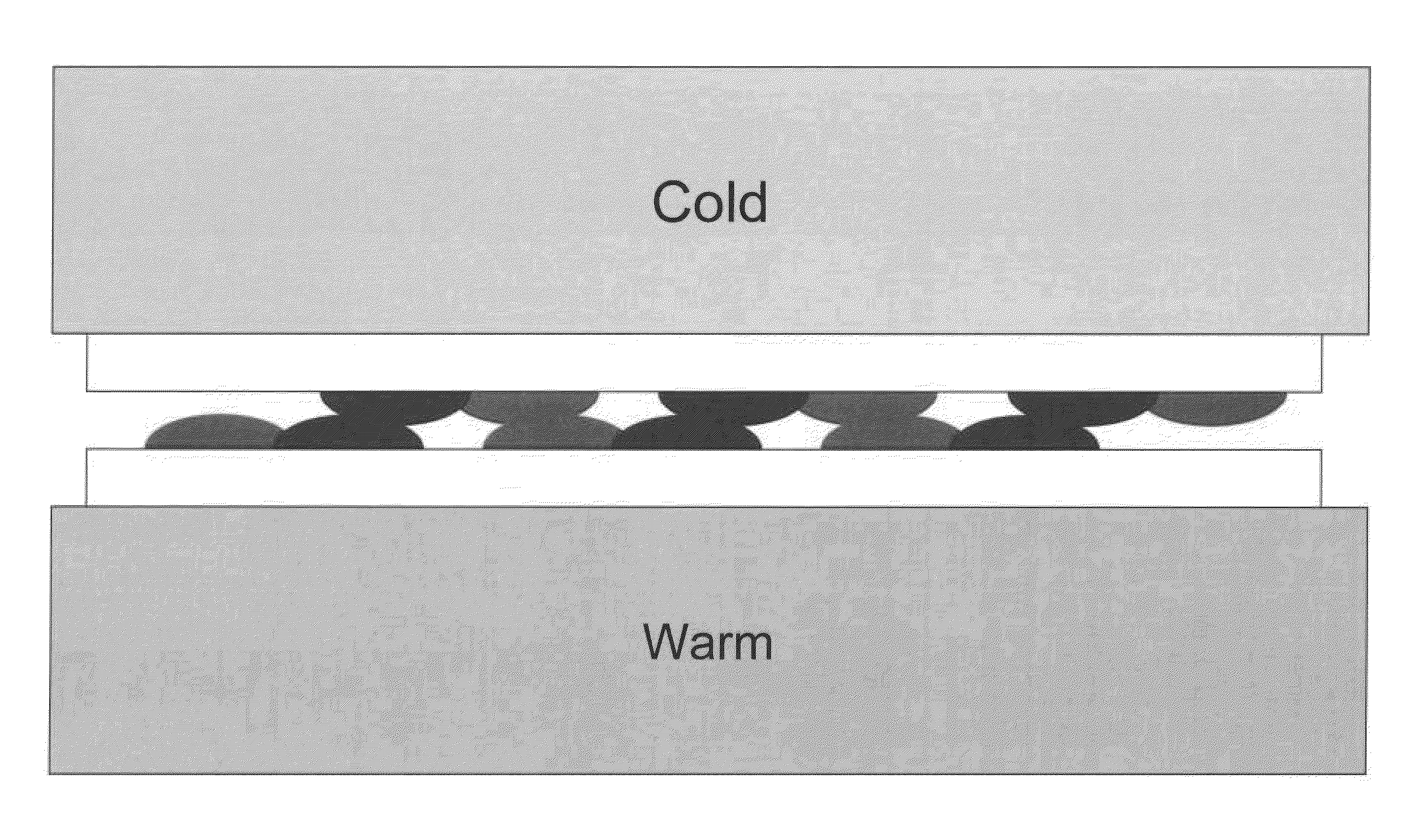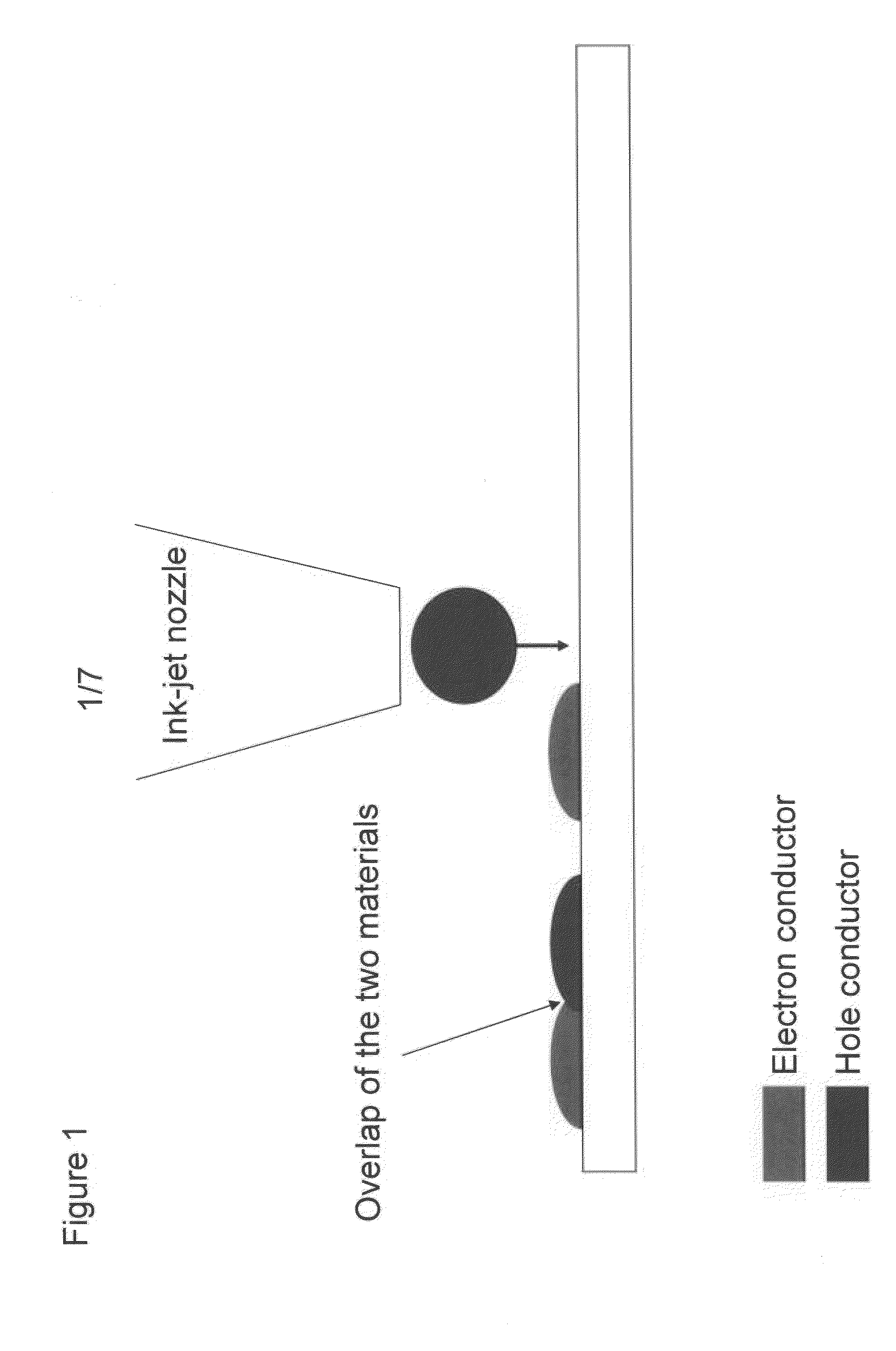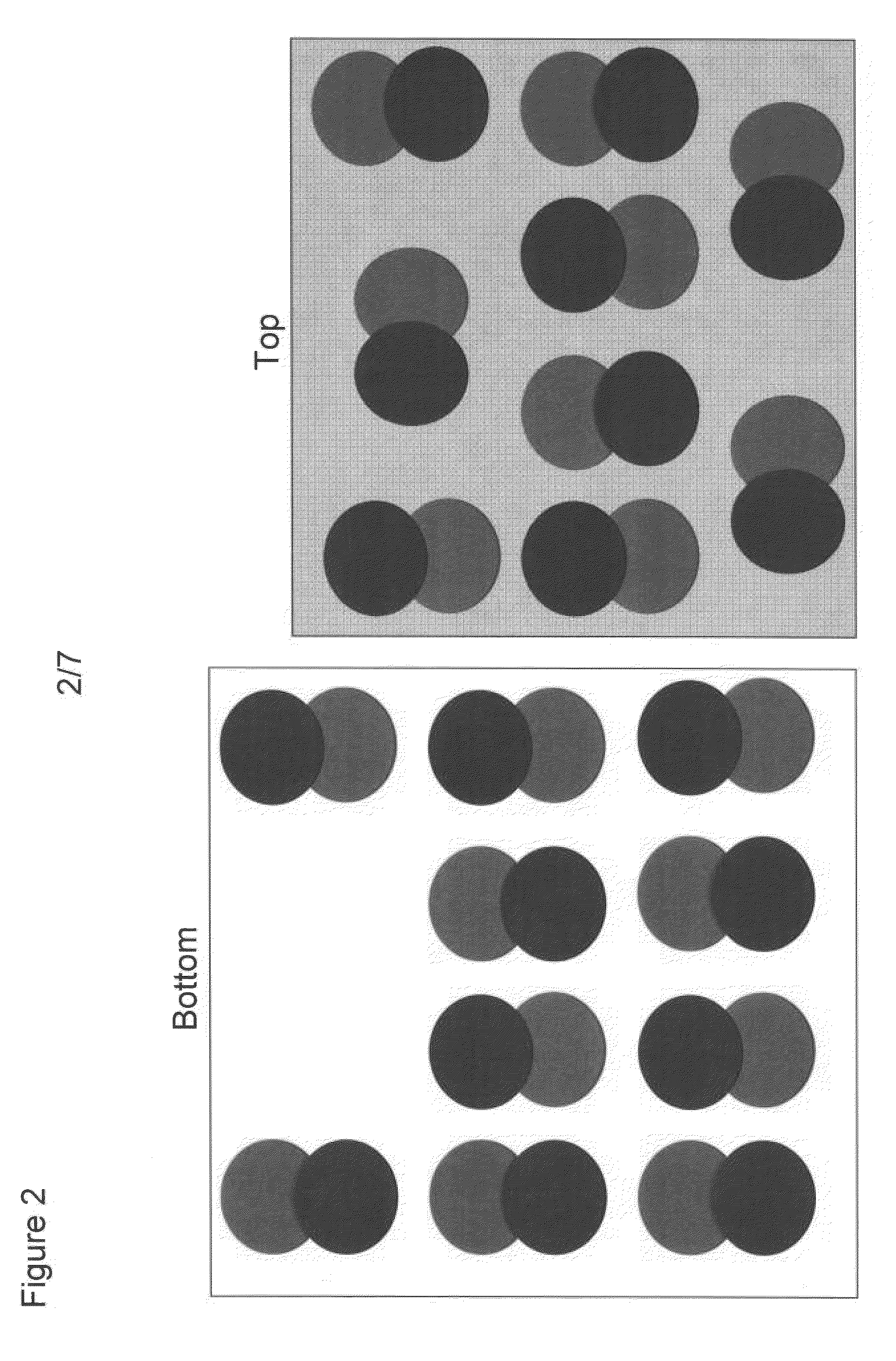Thermoelectric device
a technology of thermoelectric devices and thermoelectric devices, which is applied in the manufacture/treatment of thermoelectric devices, thermoelectric devices, and thermoelectric device details. it can solve the problems of difficult processing and manipulation, and achieve the effects of low expected cost, low cost and cheap materials
- Summary
- Abstract
- Description
- Claims
- Application Information
AI Technical Summary
Benefits of technology
Problems solved by technology
Method used
Image
Examples
example 1
[0047]An embodiment of the process is depicted in FIGS. 1 to 5. Two substrates need to be coated with hole and electron conducting organic material (for example using a solution-based ink-jet printer as depicted in FIG. 1, but any other printing technique or thermal evaporation can be used as well). The two substrates need to have a complementary design, for example the ones depicted in FIG. 2. FIG. 3 illustrates how the two complementary top and bottom substrates are brought together to build a single device. The same is illustrated in FIG. 4 for the design of FIG. 2 after the two halfs have been brought together (top view). The two electron and hole conducting regions on the bottom substrate that protrude out beyond the top substrate are used as contacts to either collect the generated electrical voltage (thermogenerator) or to apply the external voltage (Peltier element). FIG. 5 shows the final usage of the device. It either acts as a thermogenerator, i.e. it produces electrical ...
example 2
[0048]In a prototype-production, a thermogenerator was printed using a nano-plotter and a commercial accessory, “Delo-Dot”, which is a microdispensing valve (www.venso.se / pdf / delo / delodot.pdf) for printing highly viscous liquids. The exemplary P-type semiconducting material and N-type semiconducting material are shown in FIG. 6. The dimensions to be used for the prototype thermogenerator were as follows:
[0049]Dimensions:[0050]Squares: 3×3 mm (16×16 dots, 0.2 mm grid)[0051]Rectangles: 5×3mm (26×16 dots, 0.2 mm grid)[0052]Gap: 1 mm
[0053]Settings of the Delo-Dot:[0054]100V[0055]40 μs[0056]100 Hz[0057]0.5 bar[0058]1 droplet per point
[0059]Substrate: HP LaserJet transparency foil (roughly 5×5 cm)
[0060]Substrate cleaning: 15 min in UVO-cleaner
[0061]Pressed the two substrates together on a hotplate at 120° C. for 15 min using pressure of approximately 800N / m2
[0062]The resultant thermogenerator that was thus produced can be seen in FIG. 7.
example 3
[0063]In the following some suitable materials are shown that can be used as organic semiconducting materials of the n-type and p-type. Typically, for these materials organic polymers can be used, which may or may not be doped using electron donors, e.g. phosphorus, to give n-type conduction, or using electron acceptors, e.g. boron, to give p-type conduction.
[0064]Suitable polymers include for example poly(3-hexylthiophene) (P3HT), polyaniline, poly(phenylene vinylene)-disperse red 1 (PPV-DR1), polysiloxane carbazole (PSX-Cz), polypyrrole, poly(o-anthranilic acid) (PARA), poly(aniline-co-o-anthranilic acid) (PANI-PARA) and poly(3,4-ethylenedioxythiophene) (PEDOT). The structural formulas of some the above mentioned polymers are shown below:
[0065]Mixtures of polymers (e.g. PEDOT:PSS or PEDOT:Tos) or copolymers can also be used.
[0066]In order to induce charges into the polymer these materials can be doped, using for example electron donors (e.g phosphorous→n-type conduction) or electr...
PUM
| Property | Measurement | Unit |
|---|---|---|
| area | aaaaa | aaaaa |
| pressure | aaaaa | aaaaa |
| semiconducting | aaaaa | aaaaa |
Abstract
Description
Claims
Application Information
 Login to View More
Login to View More - R&D
- Intellectual Property
- Life Sciences
- Materials
- Tech Scout
- Unparalleled Data Quality
- Higher Quality Content
- 60% Fewer Hallucinations
Browse by: Latest US Patents, China's latest patents, Technical Efficacy Thesaurus, Application Domain, Technology Topic, Popular Technical Reports.
© 2025 PatSnap. All rights reserved.Legal|Privacy policy|Modern Slavery Act Transparency Statement|Sitemap|About US| Contact US: help@patsnap.com



